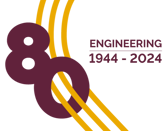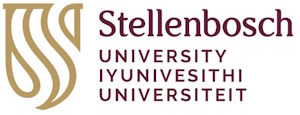
[Article written by Nane Zietsman]
The Department of Mechanical and Mechatronic Engineering at Stellenbosch University recently introduced a state-of-the-art Virtual Reality Laboratory (VR Lab) as an academic resource for undergraduate Machine Design and other modules . Professor Anton Basson explains that the addition of the VR Lab will specifically support third-year Mechanical and Mechatronic students in developing better CAD model designs. “Virtual Reality (VR) overcomes one of CAD’s major deficiencies in that it gives users a sense of the scale of the design. VR also allows design teams to inspect some design details, such as 3-D relationships, motion paths, and clearances, more effectively than 2-D displays on screens. Exposing students to VR in this way will also enable them to sensibly use the technology when they enter into industry.”
Mr Gabriel da Silva, a member of the M&M Department’s Mechatronics, Automation and Design Research Group (MADRG) offers insight into the significance of the VR Lab in the current undergraduate programme. “During an undergraduate mechanical or mechatronic engineering degree, students have numerous design projects. These design projects entail taking a problem or a user’s requirements and designing a system to meet those demands. However, many times, the students will not be able to build their system as the reason for the project is generally to teach the students about design principles and not necessarily to build the system.” According to Da Silva, not building the system means that students will never actually see how their designs would look in real life. This factor makes it difficult for students to make good design decisions seeing as the only way they can view their work is by using software on a computer screen. Virtual Reality will enable students to view their designs on a life-size scale and see the proportions of their systems. This allow students to determine if their solutions are indeed feasible or not.
Virtual Reality has interested users on a commercial level over the past few years, with new functions uncovered regularly as more industries implement this technology in their daily business practices. While the technology is commonly used in the video game industry, its use in other environments is increasing rapidly. Some of the examples listed by Da Silva include using VR to train employees, eliminating the need for physical hardware. “The employee will be placed into the virtual environment and will be able to interact with a physical model just as they would in reality.” By incorporating VR, businesses can monitor systems without traveling to that physical structure, allowing insight into how the system operates in the bigger scheme of things and what changes are needed to better the overall strategy. “Technologies such as VR and Augmented Reality (AR) could very well become industry essentials for businesses that are looking to improve and become more effective and efficient. These are just a few of the opportunities that Virtual Reality creates within research and in different implementations,” says Da Silva.
As VR’s use in various industries is growing, a further research will be beneficial to ensure that the technology delivers to its full potential. As a member of MADRG, Da Silva dedicates his postgraduate research to investigating the ability of VR to aid a data-driven decision-making process. His study centers on work done by the MADRG group under the guidance of Dr Karel Kruger and Professor Anton Basson. “The main focus of the research group has been on the Fourth Industrial Revolution where all systems and components are connected and able to communicate with one another in an idea called the Internet of Things (IoT).” Da Silva further explains that a similar concept to IoT is the idea of Cyber-Physical Systems (CPSs). “Within CPSs comes the goal of interconnectedness and the interactions of different physical and digital components of a system. It suggests the idea of a Digital Twin (DT), which is essentially a virtual representation that serves as the real-time digital counterpart of a physical object or process.” In addition to the physical assets, Digital Twin technology can replicate processes to collect data to predict how they will perform. Da Silva suggests that the large amounts of data collected by DTs can often be challenging for humans to interpret and visualise. “This is where my current research comes in. I will be investigating whether VR can be used as an effective approach to help visualise this collected data in a way that will assist in the data-driven decision-making process.”
Da Silva’s research echoes his excitement for the future of VR. “I decided on this topic because I have an interest in further advancing the Fourth Industrial Revolution and playing my part in that. Virtual Reality outside the realm of the video gaming industry is fairly new, and not many people have conducted any research into it. I find the novelty of the research and the advancement of the technologies therefore very thrilling.” Da Silva believes that the new VR Lab will play a vital role in upskilling students to become better engineers. “It is not only an exciting new feature that the students get to experience, but it is also an opportunity to align their skills with the ever-changing and growing industry.” – Da Silva.
Video: Third-year Mechatronic students inspecting their design details using VR technology (10MB, 24sec).
Photograph: (group picture, from left to right) Bianca Harber, Gregory Potgieter, Gabriel da Silva, Ethan Travers and Sebastian de Beer.



